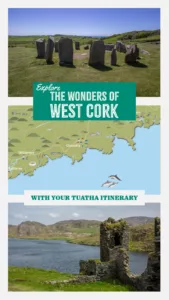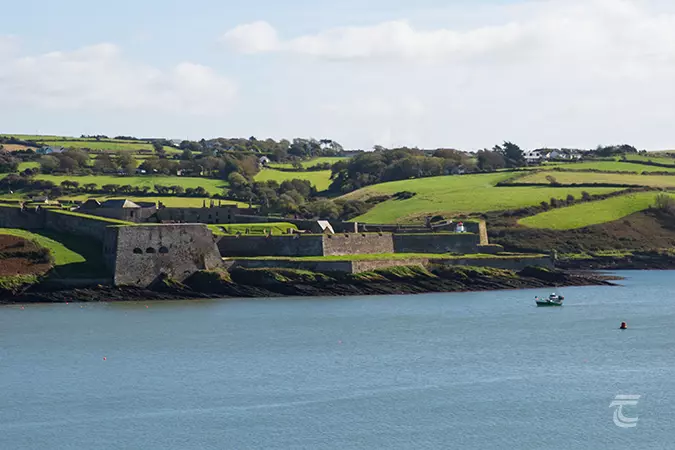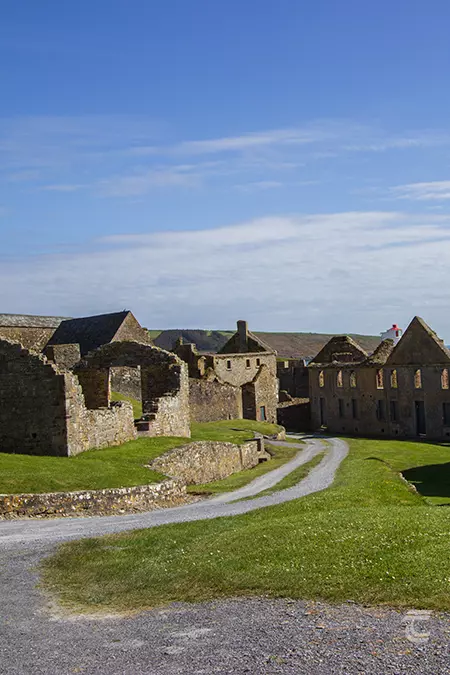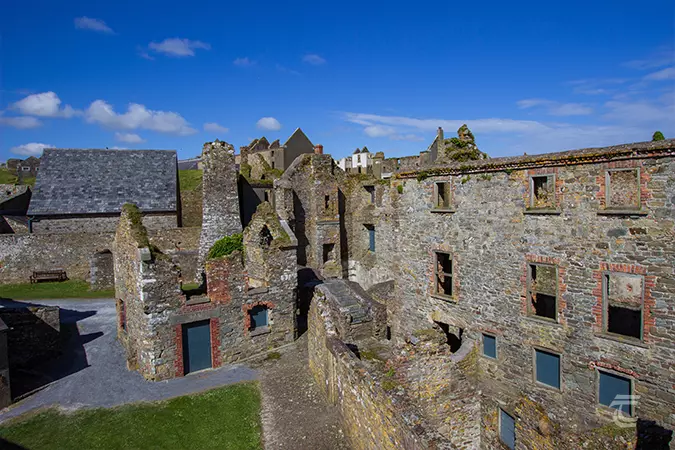Charles Fort
In the decades following the aftermath of the siege of Kinsale, the English forces began to fortify the headlands and promontories to deter any further attempts to capture the strategically vital port of Kinsale. In around 1677, the Earl of Orrery, charged with the defence of Munster, ordered the construction of a new fort to command Ringcurran Point on the eastern side of Kinsale Harbour. The fort was to be built in the most modern design of the time, as a pentagonal bastion fort that offered a seriously daunting obstacle for any enemy ships. The fort was named Charles Fort in honour of King Charles II who was on the English throne at the time of its construction. It has a series of pointed bastions with two levels of batteries giving overwhelming fire power in all seaward directions. It was designed by noted architect William Robinson, who designed other key public buildings like the Royal Hospital in Kilmainham.
For practical information about visiting this site Click Here
In the decades following the aftermath of the siege of Kinsale, the English forces began to fortify the headlands and promontories to deter any further attempts to capture the strategically vital port of Kinsale. In around 1677, the Earl of Orrery, charged with the defence of Munster, ordered the construction of a new fort to command Ringcurran Point on the eastern side of Kinsale Harbour.
The fort was to be built in the most modern design of the time, as a pentagonal bastion fort that offered a seriously daunting obstacle for any enemy ships. The fort was named Charles Fort in honour of King Charles II who was on the English throne at the time of its construction. It has a series of pointed bastions with two levels of batteries giving overwhelming fire power in all seaward directions. It was designed by noted architect William Robinson, who designed other key public buildings like the Royal Hospital in Kilmainham.
For practical information about visiting this site Click Here
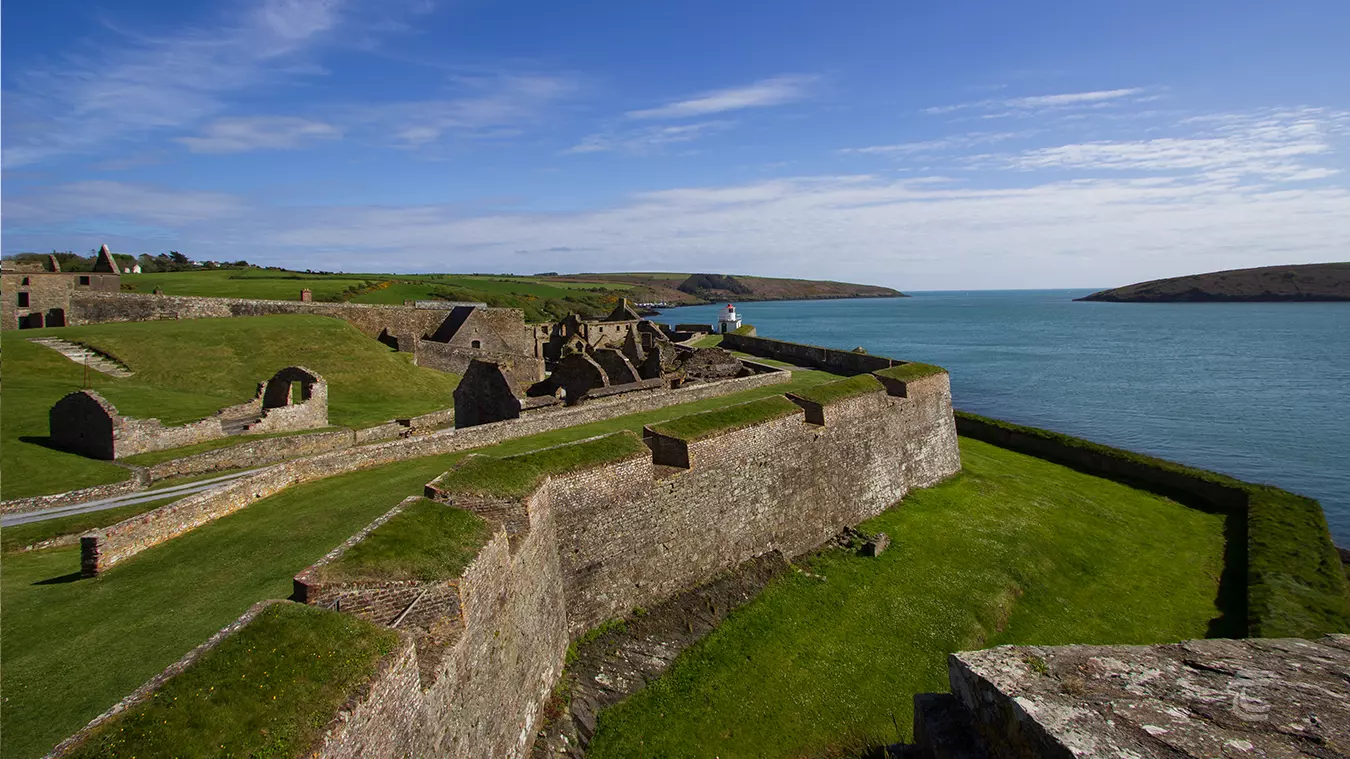
Charles Fort • Cork
The Fall of the Fort
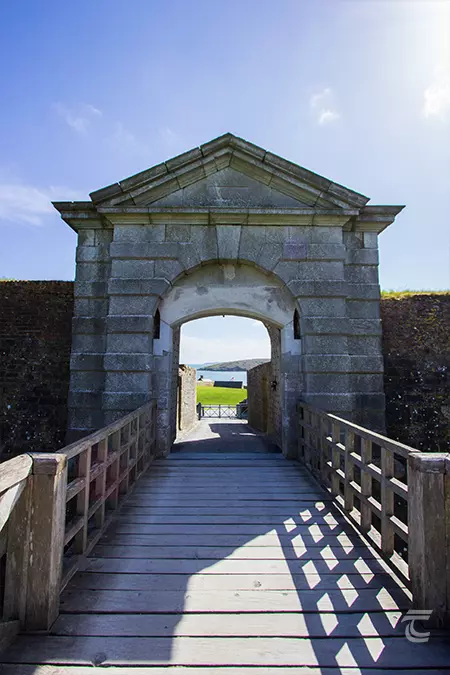
The entrance to the fort • Cork
The military engineer Thomas Phillips who inspected the fort in 1685 was impressed by the quality of workmanship and its bristling seaward defences. He did, however, also point out that the fort was vulnerable to land-based attack as it was overlooked by higher ground. His fears were proven to be all too accurate, when Charles Fort found itself under siege for the first and only time in its history in 1690.
King James II had landed in Kinsale the year before at the head of an army of Catholic supporters and French allies in order to retake the English throne that he had been denied by the English Parliament following ‘The Glorious Revolution’ in 1688. Parliament, wary of James’s attempts to return England to Catholicism and fearful of another Civil War like the one that wreaked havoc across England and Ireland just a generation before, deposed James and offered the crown to William of Orange. James and his army marched north from Kinsale to meet the Williamite forces. The two armies clashed at the Battle of the Boyne in 1690, and although a relatively minor skirmish, it led to James fleeing the battlefield and eventually Ireland. The war continued in his absence, and the Williamites marched south to take Kinsale.
Charles Fort was defended by forces loyal to King James, but after his defeat at the Battle of the Boyne, the Williamite army swept southwards and arrived at Kinsale soon afterwards. The Williamites established cannon batteries on the high ground above the fort, and dug trenches to protect the assault troops. After a thirteen day siege, which included five days of continuous cannon fire, a breach was made in the mighty walls. Fearing a massacre, the defenders had no choice but to surrender, and Charles Fort fell. In the years that followed, Cork Harbour overtook Kinsale as the key strategic southern port, and Charles Fort reverted to becoming an English militia depot. The fort remained in use until 1921, when the British garrison withdrew following the establishment of the Irish Free State. Shortly after, anti-Treaty forces destroyed the barracks and burned the buildings. It was listed as a National Monument in 1973, and today it is under the auspices of the Office of Public Works (OPW).

The entrance to the fort • Cork
Upper left: Looking to Charles Fort from Kinsale Harbour • Lower left: Domestic quarters • Right: Interior buildings
Top: Looking to Charles Fort from Kinsale Harbour • Middle: Interior buildings • Bottom: Domestic quarters
Explore more sites on the Wild Atlantic Way
